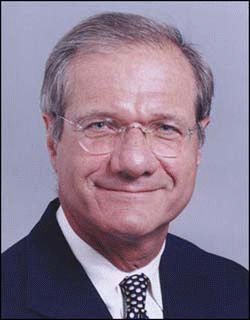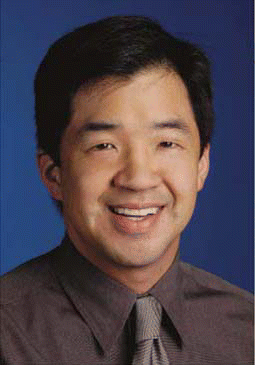CHICAGO—Endoscopic sinus surgery is an approach commonly used by otolaryngologists–head and neck surgeons, but for what indications is it the best technique to use—and how has its use evolved over the years? These are some of the questions addressed by three thought leaders during a panel assembled by the American Rhinologic Society (ARS) here at the Combined Otolaryngological Spring Meetings (COSM).
Explore This Issue
August 2006Moderator and ARS President-Elect Howard L. Levine, MD, of Cleveland Nasal, Sinus and Sleep (Ohio), explained that the panel was convened because, “The Board of ARS wanted to gain an understanding of the things we all do frequently, and whether what we do is evolving—or should we be evolving?”
Indications Past and Present
Panelist James A. Stankiewicz, MD, Professor of Otolaryngology–Head and Neck Surgery at Loyola University Health Systems in Maywood, Ill., began with an overview of recent historical guidelines on indications. “Indications for sinus surgery are divided into relative and absolute indications,” he said. “The objective of this talk is to examine each of these indications and show when surgery has merit.”
In 1997, an American Academy of Otolaryngology–Head and Neck Surgery (AAO-HNS) Rhinosinusitis Task Force came up with this list of absolute and relative indications for surgery:
Absolute Indications for Endoscopic Sinus Surgery
- Tumor
- Complicated acute rhinosinusitis
- Massive nasal polyposis/choanal polyp
- Failed sinus surgery
- Mucocele
- Fungal mycetoma
- Allergic fungal sinusitis/polyps
- Encephalocele
- Cerebrospinal fluid leak
Relative Indications for Endoscopic Sinus Surgery
- Chronic rhinosinusitis failing medical therapy
- Headache
- Recurrent acute sinusitis
- Epistaxis
- Nasal polyps
Then in 1990, the First International Conference on Sinusitis Disease was held. At that time, sinusitis was seen as an infectious disease. The AAO-HNS clinical indicators delineate the following maximal medical therapy for chronic rhinosinusitis:
 Dr. Howard L. Levine moderated a session on ‘Indications for Endoscopic Sinus Surgery,’ assembled by the American Rhinologic Society.
Dr. Howard L. Levine moderated a session on ‘Indications for Endoscopic Sinus Surgery,’ assembled by the American Rhinologic Society.- Four weeks or more of treatment;
- Decongestants;
- Topical steroid; and
- Possibly oral steroid.
If symptoms are persistent after medical therapy, evidence for disease is explored via endoscopy or CT scan, possibly followed by surgery.
The AAO-HNS task force updated these indications in 2004, stating that chronic sinusitis is an inflammatory disease, and may be a systemic disease. “So, is new therapy necessary, given that we are dealing with an inflammatory disease?” asked Dr. Stankiewicz. “This new knowledge of the etiology of chronic sinusitis requires a re-thinking of our relative clinical indicators for surgery.” Since chronic sinusitis is an inflammatory, perhaps systemic disorder, the use of anti-inflammatory medication plays an important treatment role prior to surgery. Now medical therapy may include:
- Burst/taper oral prednisone;
- Topical steroids;
- Decongestants;
- Antibiotics if purulence is present;
- Possibly anti leukotrienes;
- Possibly anti-immunoglobulin E; and
- Possibly antifungals.
Issues that still require resolution include the timing of a post-treatment CT scan; the course of action if the patient’s symptoms improve but the disease is still present; a comparison of instrumentation-powered surgery versus balloon sinuplasty; and much more.
Surgery for Minimal Disease
Peter H. Hwang, MD, Associate Professor of Otolaryngology–Head and Neck Surgery and Director of the Stanford Sinus Center at Stanford University School of Medicine (Calif.), presented information on indications for surgery when minimal disease is present. “Surgery for minimal disease is a controversial area,” said Dr. Hwang. “It’s driven by anecdotal experience and personal opinion.”

Leave a Reply